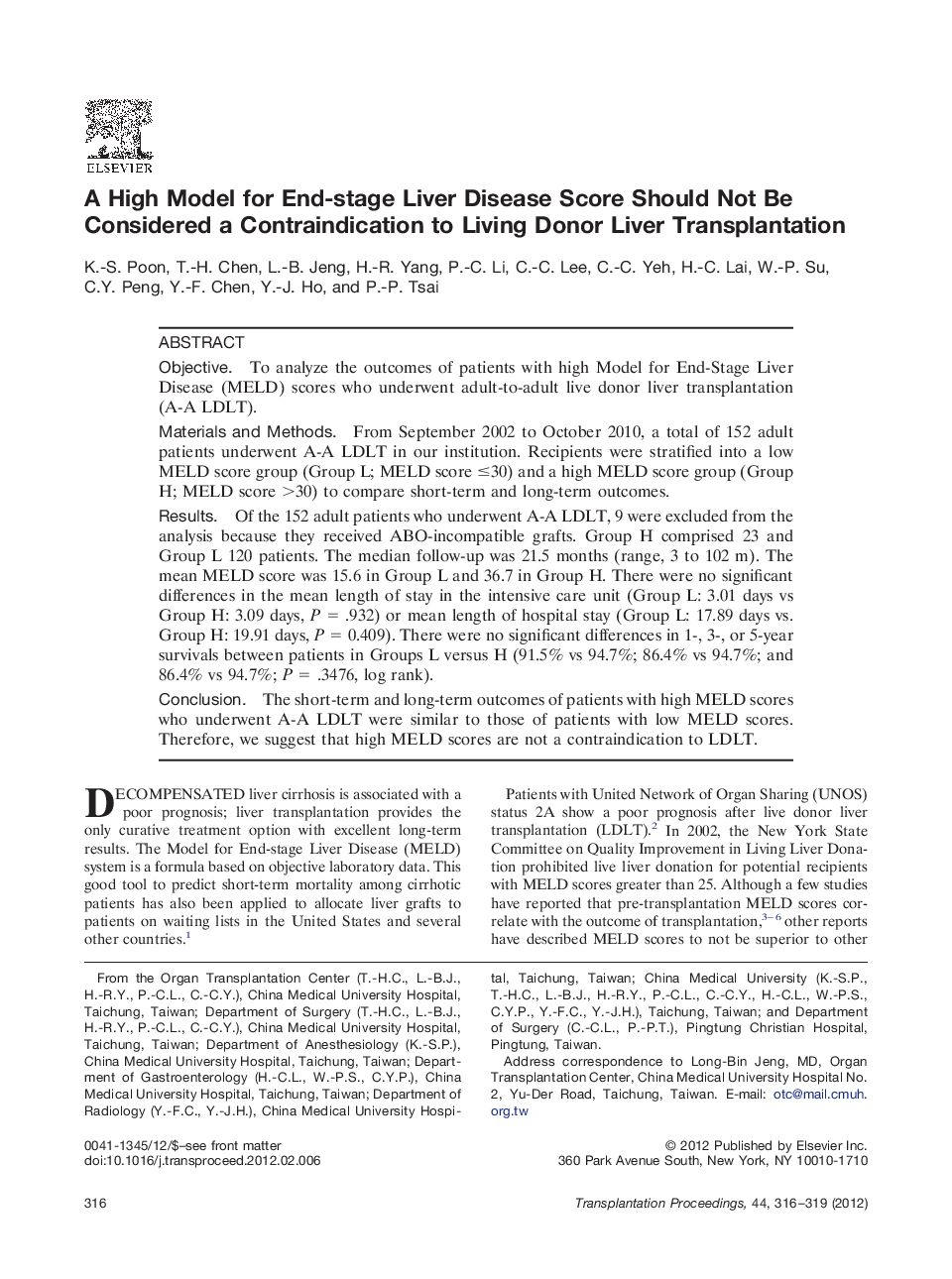| Article ID | Journal | Published Year | Pages | File Type |
|---|---|---|---|---|
| 4260336 | Transplantation Proceedings | 2012 | 4 Pages |
ObjectiveTo analyze the outcomes of patients with high Model for End-Stage Liver Disease (MELD) scores who underwent adult-to-adult live donor liver transplantation (A-A LDLT).Materials and MethodsFrom September 2002 to October 2010, a total of 152 adult patients underwent A-A LDLT in our institution. Recipients were stratified into a low MELD score group (Group L; MELD score ≤30) and a high MELD score group (Group H; MELD score >30) to compare short-term and long-term outcomes.ResultsOf the 152 adult patients who underwent A-A LDLT, 9 were excluded from the analysis because they received ABO-incompatible grafts. Group H comprised 23 and Group L 120 patients. The median follow-up was 21.5 months (range, 3 to 102 m). The mean MELD score was 15.6 in Group L and 36.7 in Group H. There were no significant differences in the mean length of stay in the intensive care unit (Group L: 3.01 days vs Group H: 3.09 days, P = .932) or mean length of hospital stay (Group L: 17.89 days vs. Group H: 19.91 days, P = 0.409). There were no significant differences in 1-, 3-, or 5-year survivals between patients in Groups L versus H (91.5% vs 94.7%; 86.4% vs 94.7%; and 86.4% vs 94.7%; P = .3476, log rank).ConclusionThe short-term and long-term outcomes of patients with high MELD scores who underwent A-A LDLT were similar to those of patients with low MELD scores. Therefore, we suggest that high MELD scores are not a contraindication to LDLT.
